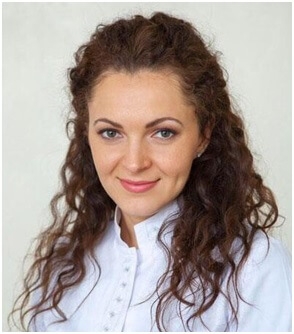Rested and cheerful look at any time of the year – is it possible? An unequivocal answer – Yes! If a cosmetologist knows how to combine skin peeling and redermalization, he can give the patient such a desired freshness in a matter of hours.
V. Zolotareva, candidate of medical sciences, dermatovenereologist, cosmetologist, head teacher of the Grand-Academy cosmetology V. Zolotareva - Alla Gara spoke about the features of this procedure, the main indications for its implementation, as well as the tactics of working with various dermatological problems, especially for estet-portal readers.
Classic peeling and peeling combined with redermalization: what is the difference

A.G.: Conventional skin peeling – it is a mono-treatment during which any acid peel is applied and then neutralized.
The combination of Institute Hyalual peeling and redermalization procedure is a much more effective combined technique.
The main advantage of combined techniques — this is a complex effect: in one procedure, the doctor gets the opportunity to perform both peeling and redermalization of the skin.
During the procedure, the peeling components, together with skin microtrauma, launch a whole cascade of reparative processes, thereby increasing the effectiveness of the procedure.
You may also be interested in: The right approach to patient management: recommendations for a dermatocosmetologist
What are the types of peeling in combination with redermalization
A.G.: There are four types of peels that we use during combined peeling and redermalization:
- Advanced Resurfacing Peel is for older women, suitable for deep wrinkles;
- Clarifying Peel is ideal for oily and problematic skin, can be used in the complex treatment of acne, post-acne and seborrhea;
- Brightening Peel aims to even out skin tone, therefore it is used for patients with pigmentation;
- Glow Enhancing Peel is designed for dull, tired skin, smoker's skin and also great for people who work in the office.
A wide range of peels allows you to solve almost any problem of the patient.
Are there any peculiarities in the choice of drugs for the combined use of peeling and redermalization
A.G.: The peeling itself is selected depending on the patient's problem. As for hyaluronic acid preparations, which are used for the redermalization procedure, we have five main tools in our arsenal:
- Hyalual Electri with hyaluronic acid concentration 0.55%;
- Hyalual H&S 0.9%;
- Hyalual light 1.1%;
- Hyalual Smart 1.8%;
- Hyalual booster 2.2%.
For younger patients with dull skin, we use Hyalual Electri more often. To solve problems such as acne and post-acne – Hyalual H&S. With deformation-edematous type of aging, it is best to work with Hyalual light, and for fine-wrinkled – alternate between Hyalual Smart and Hyalual booster.
Read also: Success of microneedle redermalization in solving various aesthetic problems
Which skin peeling to prefer: superficial or deep
A.G.: During the procedure of combined peeling and redermalization, we work superficially. Thus, all four peels are gentle, neutralized by water and do not require a long rehabilitation period. If we are talking about deep peels, then they are carried out for medical reasons, when the patient has deep wrinkles, creases, scars, scars, etc.
Deep peels, unlike superficial ones, require a long rehabilitation period, since the skin is completely restored only within 28 days.
As a result of deep peeling, most often, we get an excellent effect, but also often the doctor has to deal with the appearance of complications such as hyperpigmentation. Therefore, in my practice, I prefer to work more superficially, even if it takes more time. After all, as they say, you go quieter – you will continue.







Add a comment